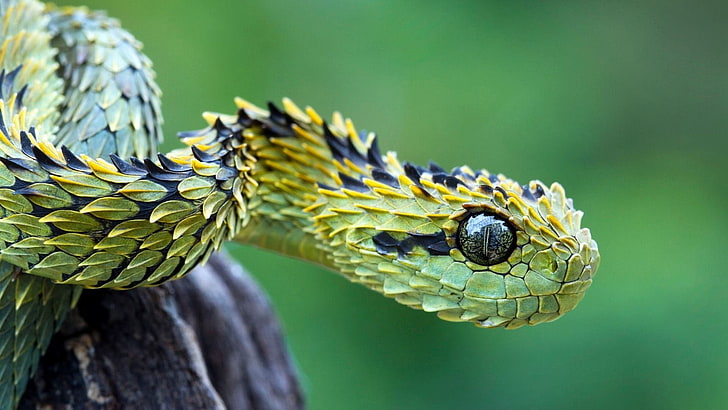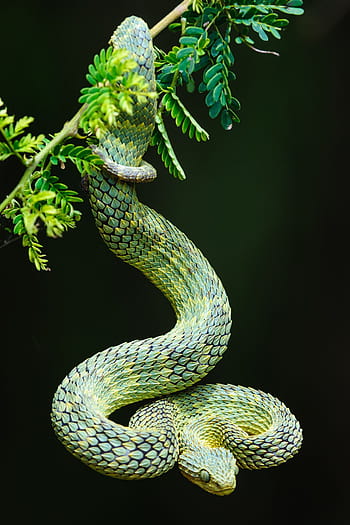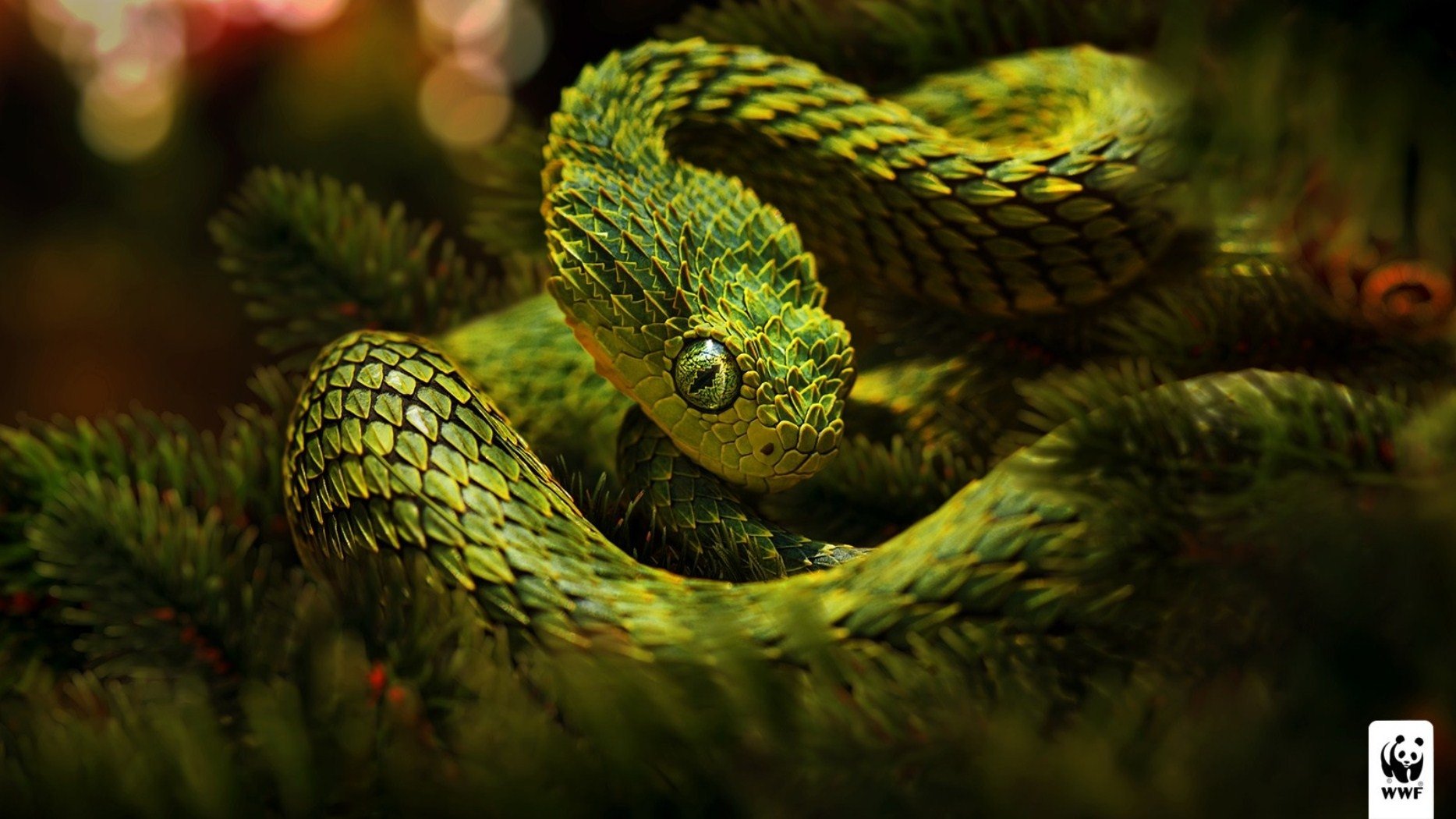The bush viper (Atheris) is a genus of vipers known as bush vipers. They are found only in tropical subsaharan Africa (excluding southern Africa) and many species have isolated and fragmented distributions due to their confinement to rain forests. Like all other vipers, they are venomous. In an example of convergent evolution, they show many similarities to the arboreal pit vipers of Asia and South America. Seventeen species are currently recognized.
Description:
The bush vipers (Atheris) are a group of venomous snakes belonging to the Viperidae family. They are known for their striking coloration and diverse patterns. Bush vipers exhibit a wide range of colors, including vibrant shades of green, yellow, orange, red, brown, and sometimes blue or purple. They have a stout body with a triangular-shaped head and a distinct, narrow neck. Their eyes have vertical pupils, which is a characteristic feature of many venomous snakes.
Location:
Bush vipers are native to sub-Saharan Africa. They are found in various countries across the region, particularly in tropical rainforests, bamboo thickets, and other dense vegetation-rich habitats. Some species have specific distributions, while others can be found across multiple countries.
Conservation Status:
The conservation status of individual species of bush vipers can vary. Due to their elusive nature and remote habitats, there may be limited data on some species. However, like many other reptiles, bush vipers face threats from habitat destruction, deforestation, and human activities. Some species may be listed as vulnerable or endangered, while others may have more stable populations.
Behavior:
Bush vipers are primarily arboreal, spending much of their time in trees and shrubs. They are well-adapted to life in the treetops and use their excellent camouflage to blend in with the foliage. Bush vipers are generally solitary and nocturnal hunters. They move slowly and deliberately as they navigate through their habitat, searching for prey or suitable resting spots.
Diet:
Bush vipers are carnivorous and primarily feed on small vertebrates, such as rodents, birds, lizards, and other small animals. They are ambush predators and rely on their venom to immobilize or kill their prey.
Reproduction:
Bush vipers are ovoviviparous, meaning the females retain the eggs inside their bodies during development. Once fully developed, the female gives birth to live young. The number of offspring produced can vary between species.
Captivity:
Some species of bush vipers are kept in captivity by experienced reptile enthusiasts and zoological institutions. However, keeping venomous snakes like bush vipers requires specialized knowledge, permits, and facilities. Captive-bred specimens are preferred to avoid contributing to the depletion of wild populations.
Venom:
Bush vipers are venomous snakes and possess long, hinged fangs to inject venom into their prey. Their venom is potent and designed to immobilize or kill small vertebrates. While their venom can be dangerous to humans, they are not typically aggressive towards humans and will usually try to avoid confrontation.
Please note that information about specific species may vary, and new research or updates might be available beyond my knowledge cutoff date. Always consult reputable sources for the most current and accurate information on bush vipers or any other subject.




Comments
Post a Comment